In the world of dog lovers, “hypoallergenic” offers hope to those with allergies. The term suggests that certain breeds might trigger fewer allergic reactions. Although no dog is completely allergen-free, hypoallergenic breeds are bred to produce fewer allergens like dander, and proteins in saliva and urine that can cause reactions such as sneezing, coughing, and asthma. These breeds typically shed less, reducing allergen dispersion in the home.
Millions suffer from pet allergies that can prevent owning a dog, despite the known benefits like stress reduction, companionship, and physical activity that dogs provide. Hypoallergenic dogs allow allergy sufferers to enjoy these benefits without severe discomfort. These dogs serve not only as companions but also support emotional and physical health in various roles.
This article explores hypoallergenic dogs’ characteristics, effective grooming practices, and lifestyle considerations to minimize allergens. Understanding these factors helps allergy sufferers choose a dog that suits their needs and manage symptoms effectively, making dog ownership possible for those previously impacted by allergies.
Understanding Dog Allergens

Navigating the world of hypoallergenic dogs requires an understanding of the specific allergens these pets produce and how they interact with human immune systems. This section delves into the primary allergens found in dogs, explores the traits of hypoallergenic breeds that may influence allergen levels, and discusses the importance of grooming and size in managing allergy symptoms. For allergy sufferers considering a hypoallergenic dog, recognizing these factors is crucial to making informed decisions about which breed might best suit their needs and lifestyle.
Understanding Canine Allergens and Their Impact
Primary Allergens in Dogs Canine allergens are proteins primarily found in a dog’s dander, saliva, urine, and blood, with Can f 1 being the most prevalent and a common trigger for allergic reactions. These proteins can cause symptoms ranging from mild (sneezing, itchy eyes) to severe (asthma attacks). Allergens attach to fur and skin cells, spreading easily to clothing, furnishings, and air, thus permeating an individual’s living environment.
Allergen Variability in Hypoallergenic Dogs Research shows that hypoallergenic dogs may have varying levels of Can f 1 and other allergens, even within the same breed. Common traits among these breeds include:
-
Reduced Shedding: Many hypoallergenic breeds, such as Poodles, have coats that are less prone to shedding. This theoretically keeps more dander and allergenic proteins contained, reducing environmental allergen levels. However, it’s important to note that no breed is completely non-shedding.
-
Size and Allergen Production: Smaller breeds typically have less skin surface area, potentially producing fewer allergens than larger breeds. This might make smaller dogs more suitable for confined spaces or sensitive individuals.
-
Grooming and Allergen Reduction: Regular grooming can significantly reduce allergens by removing dander and saliva. For allergy sufferers, consistent grooming is crucial, not just for pet cleanliness but for managing allergen exposure.
Individual Variability and Allergen Sensitivity The level of allergens produced can vary significantly from one dog to another, making it challenging to label any single breed as the best for allergy sufferers. Likewise, individual human sensitivities to allergens can differ greatly.
Key Considerations for Potential Owners
Hypoallergenic dogs are best described as breeds that are less likely to shed allergens significantly or have characteristics that minimize allergen dispersal. Understanding these nuances is vital for allergy sufferers to make informed decisions about adding a hypoallergenic dog to their family. Recognizing the variable nature of both canine allergen production and human allergic responses allows for a tailored approach to selecting and managing life with a hypoallergenic dog. This involves not only choosing the right breed but also implementing stringent grooming routines and maintaining household cleanliness to manage allergen levels effectively.
With a deeper understanding of the proteins triggering allergies and the traits of hypoallergenic dogs, we can better appreciate the specific characteristics like fur type, shedding tendencies, and grooming needs that define hypoallergenic breeds. This knowledge is crucial for anyone with dog allergies considering pet ownership, guiding them towards making choices that align with their lifestyle and health needs
Characteristics of Hypoallergenic Dogs
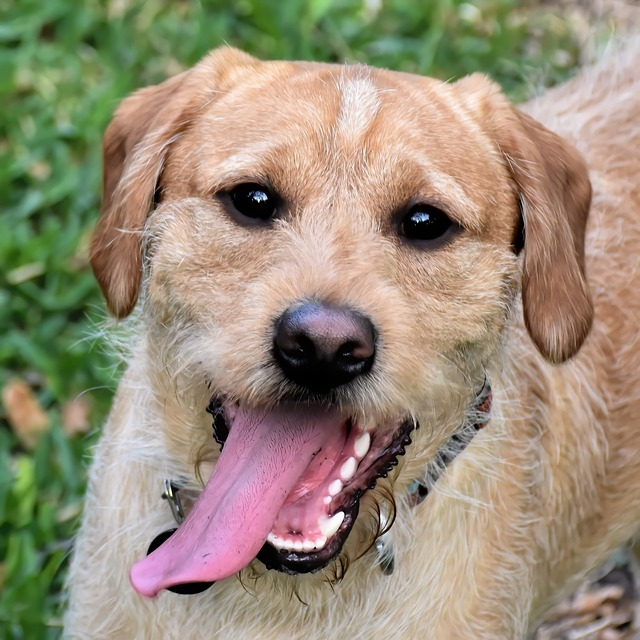
To delve deeper into the factors that contribute to a dog’s hypoallergenic status, it is essential to understand the physical characteristics common among hypoallergenic breeds that influence their interaction with the human immune system.
Key Characteristics of Hypoallergenic Dogs
Understanding the physical traits that contribute to a dog’s hypoallergenic status can help allergy sufferers find a compatible pet. Here’s a concise overview:
Hair Type
-
Hair vs. Fur: Hypoallergenic dogs often have hair that grows slowly and sheds less frequently, reducing allergen spread. For example, Poodles and Yorkshire Terriers have hair that traps allergens, preventing them from becoming airborne.
Dander Production
-
Reduced Dander: Breeds like Bichon Frises and Shih Tzus produce less dander due to their unique coat types. Less dander means fewer airborne allergens.
Skin Oils
-
Natural Oils: Dogs with less oily skin distribute fewer allergens. Breeds with less oily coats, such as the Soft-coated Wheaten Terrier, are preferable for those with allergies.
Coat Density and Grooming
-
Trapping Allergens: Dense-coated breeds like Portuguese Water Dogs and Schnauzers can trap allergens. However, this requires regular grooming to manage allergen buildup effectively.
-
Grooming Needs: Frequent grooming is crucial for hypoallergenic breeds to reduce allergens. Breeds like Labradoodles and Goldendoodles, despite their low shedding, need regular grooming to maintain their hypoallergenic properties.
Hair Texture and Length
-
Curly vs. Straight Hair: Curly-haired breeds (e.g., Poodles) may retain allergens close to their skin, while straight-haired breeds might release more allergens into the environment.
-
Hair Length: Short-haired hypoallergenic breeds generally spread fewer allergens.
Size Factors
-
Smaller Surface Area: Smaller dogs have less skin to shed dander from, potentially reducing allergen spread.
Read More: Large Dog Breeds That Don’t Shed Much
Managing Expectations and Care
Understanding these characteristics is crucial not only for managing allergy expectations but also for providing appropriate care to hypoallergenic dogs. Specific grooming techniques and regular care tailored to the dog’s coat type and skin health are vital to minimizing allergen exposure.
Interaction and Personal Allergy Assessment
Potential owners should spend time with different breeds to personally assess their allergic reactions, as individual sensitivities vary. Choosing a dog that matches one’s lifestyle and allergy needs is essential for a successful adoption.
This summary highlights the crucial factors in hypoallergenic dogs that help reduce allergens, providing a foundation for better coexistence between these dogs and individuals with allergies.
Popular Hypoallergenic Dog Breeds
For those considering adding a hypoallergenic dog to their home, there is an array of breeds to choose from, ranging from toy to large breeds, each with its unique characteristics, behaviors, and maintenance needs. Here is an in-depth look at some of the most popular hypoallergenic dog breeds:
Poodle (Toy, Miniature, and Standard)
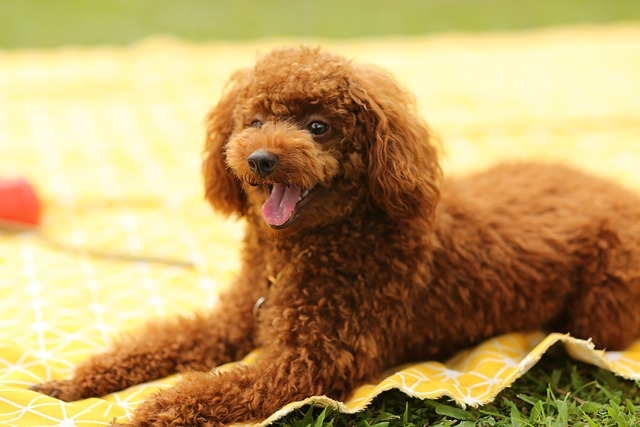
The Poodle, available in Toy, Miniature, and Standard sizes, is a hallmark of the hypoallergenic breed category. Renowned for their intelligence and elegance, Poodles have a curly, dense coat that is known for shedding minimally. This breed’s hair is akin to human hair, which continues to grow and requires regular grooming to prevent matting. Poodles are active dogs, requiring both physical and mental stimulation. They excel in obedience training, making them suitable for a wide range of dog sports and activities. Despite their athletic ability, Poodles can adapt well to apartment living, provided they receive adequate exercise. Social and affectionate, Poodles are good with children and other pets, making them an excellent choice for many family settings.
Bichon Frise
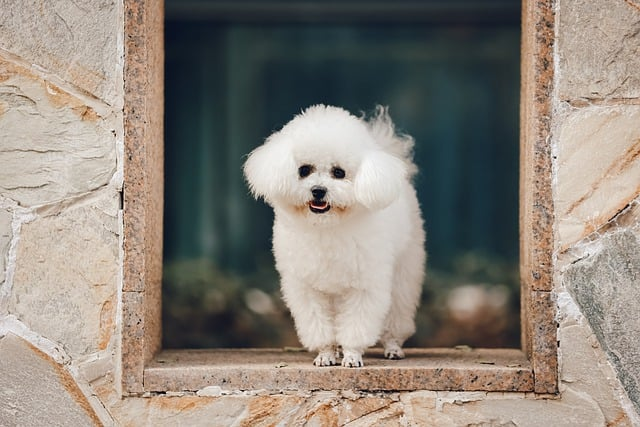
With their fluffy white coats and cheerful dispositions, Bichon Frises are another favorite for those with allergies. These dogs possess a double coat with a soft, dense undercoat and a curly outer coat that doesn’t shed much, thus producing less dander. They are generally small in size, making them great companions for those with limited space. Despite their diminutive stature, they have a robust spirit and enjoy being the center of attention. Bichons are playful and friendly, and they thrive on human interaction. Regular grooming is essential for the Bichon Frise to keep their coat free of mats and to minimize allergens. They’re adaptable to various living situations but do require consistent, gentle training and socialization from a young age.
Schnauzer (Miniature, Standard, and Giant)
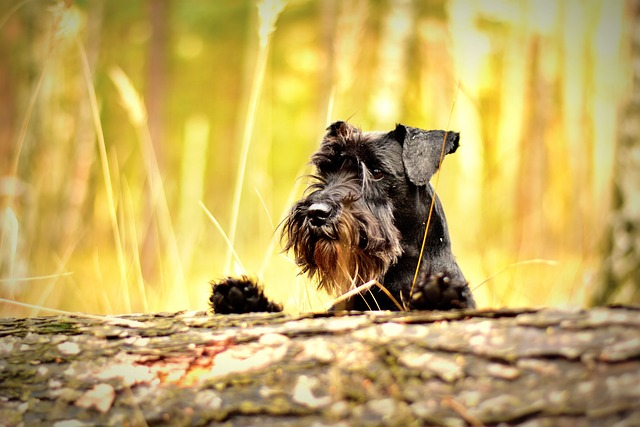
Schnauzers come in three sizes – Miniature, Standard, and Giant – and are characterized by their wiry coats and distinctive facial furnishings. Their double coat consists of a soft undercoat and a harder outer coat, which minimizes shedding and trapping of allergens. Schnauzers are known for being alert, spirited, and versatile dogs. Miniature Schnauzers are particularly suited for city living due to their compact size, while Standard and Giant Schnauzers require more space and are excellent watchdogs. Schnauzers have a high prey drive and can be strong-willed, requiring consistent training. With proper socialization, they get along well with children and other animals. They need regular grooming, including hand stripping or clipping, to maintain their coat’s texture and reduce allergens.
Yorkshire Terrier
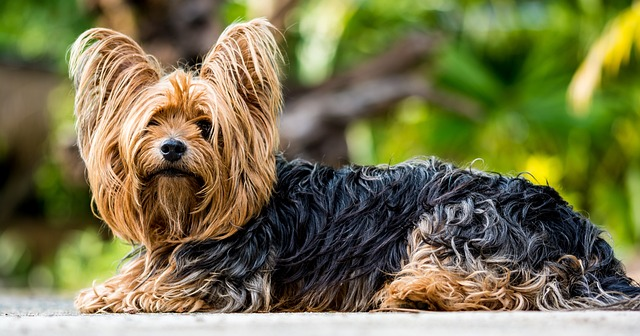
Yorkshire Terriers, often called Yorkies, are a toy breed renowned for their long, silky hair that closely resembles human hair and sheds very little. They are ideal for allergy sufferers who prefer a smaller canine companion. Yorkies are vibrant and affectionate, but they also possess a terrier’s tenacity and spirited nature. Although they require regular grooming to keep their fine hair tangle-free, many owners opt to keep their Yorkie’s coat in a “puppy cut” for easier maintenance. Despite their small size, Yorkies are known for being brave and sometimes oblivious to their diminutive stature. They’re energetic and will require regular exercise, and are better suited to households without very young children due to their small size and need for gentle handling.
Portuguese Water Dog

The Portuguese Water Dog, once a working breed that aided fishermen, is now a well-loved hypoallergenic pet. Although there are not dogs that don’t shed completely, the PWD possess a waterproof coat, either wavy or curly, which is virtually non-shedding. Known for their loyalty and intelligence, Portuguese Water Dogs are active and require regular, vigorous exercise. They are excellent swimmers, as their history would suggest, and excel in water-based activities.
Their coats need considerable grooming, including regular brushing and clipping, to prevent matting and maintain their unique look. This breed is affectionate and gets along well with children and other pets. They’re also known to be good with strangers, making them less suitable as guard dogs but great for families that enjoy socializing.
Shih Tzu
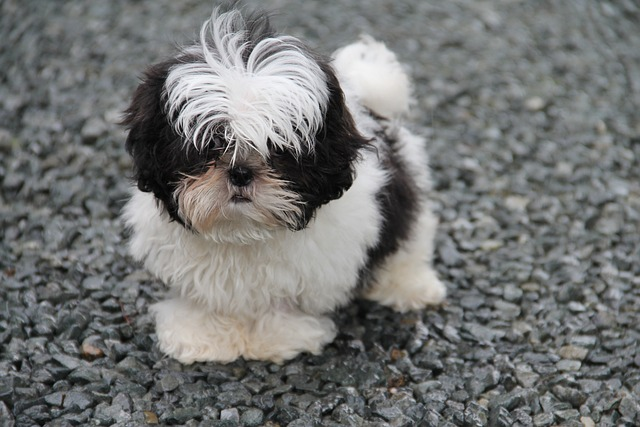
Shih Tzus, with their distinctive long, flowing coats and sweet nature, are a toy breed that’s well-suited for allergy sufferers. Their hair grows continuously and sheds very little, and they produce less dander compared to other breeds. Shih Tzus are known for their friendly and outgoing personality, making them excellent companions. They’re well-suited to apartment living but still require regular exercise. Their luxurious coat does require daily grooming to prevent tangles and keep it in top condition, and many owners keep their Shih Tzu’s hair trimmed short, known as a “puppy cut,” for easier maintenance. They’re generally good with children and other pets but can have a stubborn streak, so consistent training is recommended.
Chinese Crested

The Chinese Crested breed comes in two varieties, Hairless and Powderpuff, both considered hypoallergenic. The Hairless variety has soft, human-like hair on its head, tail, and paws, while the Powderpuff is covered with a veil of fine hair. Despite their different looks, both types shed very little. Chinese Crested dogs are affectionate and playful, forming strong bonds with their owners. They are sensitive and do best in a calm environment. Due to their minimal hair, the Hairless variety requires protection from extreme weather but is lower maintenance in terms of grooming. The Powderpuff’s coat requires regular brushing to avoid matting. They are alert dogs but may not be suitable for homes with very young children due to their delicate build.
Labradoodle and Goldendoodle
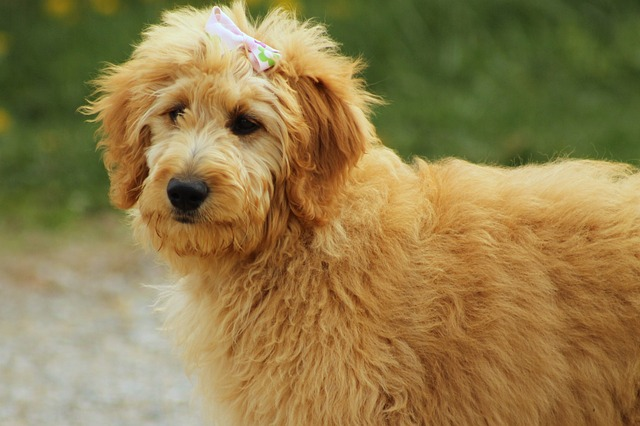
The Labradoodle and Goldendoodle are popular designer breeds resulting from crossing a Labrador Retriever or a Golden Retriever with a Poodle, respectively. Their coats vary, inheriting the Poodle’s hypoallergenic properties to varying degrees. Some may have curly, wool-like coats that are hypoallergenic, while others have straighter hair that may shed. These breeds are known for their intelligence, friendliness, and family-oriented nature. They’re active dogs that integrate well into most family dynamics, including those with children and other pets. They require regular exercise and mental stimulation to stay content. Grooming needs can vary, but typically, they require regular brushing and professional grooming to maintain their coat’s condition and manage allergens.
When choosing the right hypoallergenic dog, one should consider the individual breed’s needs, their ability to meet those needs, and how the dog may fit into their particular living environment and lifestyle. With thoughtful selection and proper care, each of these breeds can make an exceptional companion for those with sensitivities to dog allergens.
These breeds represent a fraction of the hypoallergenic options available, each with its distinct allure and suitability for different lifestyles. Other popular hypoallergenic dogs include the Irish Water Spaniel, American Hairless Terrier, Kerry Blue Terrier, Afghan Hound, Bedlington Terrier, Wire Fox Terrier, Giant Schnauzer, the Spanish Water Dog, and various hairless dogs
Read More: The Top Dog Breeds For Allergy Sufferers
Next, we will look into advice for selecting the right hypoallergenic dog based on personal circumstances, including considerations for one’s family setting, activity level, and living space.
Choosing the Right Hypoallergenic Dog for You
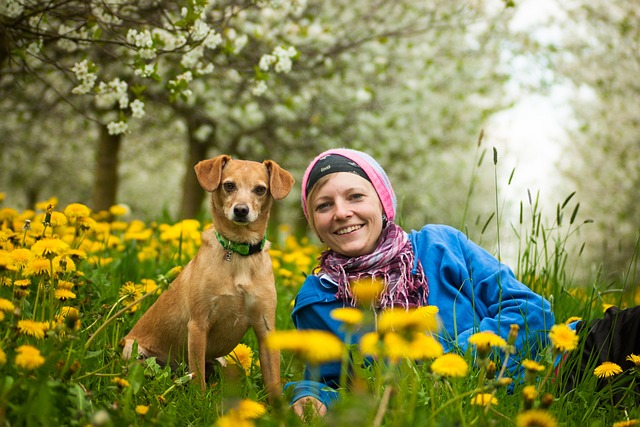
Selecting a hypoallergenic dog that fits your lifestyle, living conditions, and allergy sensitivity is an important decision. While the dog breeds previously mentioned share the common label of “hypoallergenic,” there is considerable variation within this group that must be taken into account. Here are some practical tips for choosing the right hypoallergenic dog for you:
Assess Your Allergy Severity
First and foremost, it’s essential to understand your allergy level. Some people may have mild reactions, while others may suffer from more severe symptoms. Spend time with different hypoallergenic breeds to observe your reactions. Contact local breeders or dog shelters and ask if you can visit their dogs. Interacting with a dog for a substantial amount of time will give you a clearer idea of how your allergies may be affected. Remember that while no dog is entirely hypoallergenic, some breeds may be more suitable for your specific allergy profile.
Consider Dog Size and Energy Level
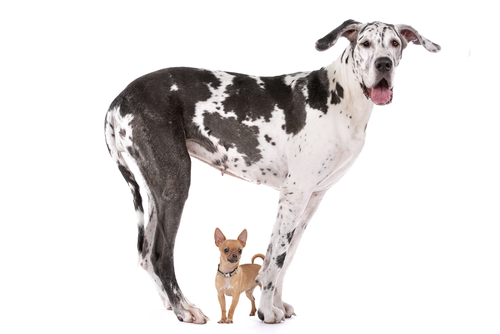
Hypoallergenic dogs range from small breeds like the Bichon Frise to larger breeds like the Standard Poodle or Portuguese Water Dog. Smaller dogs often adapt well to apartment living and may require less exercise than larger breeds. Conversely, bigger dogs will generally need more space and more vigorous activities. Reflect on your lifestyle—are you looking for an energetic companion to join you on runs, or a more laid-back friend who is content with short walks and lots of cuddles?
Assess Your Personal Preferences
Think about the type of dog that appeals to you aesthetically and temperamentally. Do you prefer a dog with a long, flowing coat like the Shih Tzu, or would you rather have one with a short, easy-to-care-for coat like the Hairless Chinese Crested? When considering fur type, remember that longer coats often require daily grooming, which can be a bonding experience but also time-consuming. Also, consider the dog’s temperament; if you have young children or other pets, you’ll want a breed that is known for being gentle and sociable.
Understand the Exercise Requirements
Every dog needs regular exercise to maintain physical and mental health. However, different breeds have varying levels of energy and exercise needs. For example, a Yorkshire Terrier will have different exercise requirements compared to a Labradoodle. Understanding these needs is crucial because inadequate exercise can lead to behavior issues, which can affect the quality of life for both the dog and the owner.
Meet the Breed Firsthand

If possible, arrange to meet the breed you’re interested in before making a commitment. Some dogs may behave differently in various environments, and a breed’s general characteristics might not always apply to every individual within that breed. Interacting with the breed firsthand allows you to get a feel for its behavior, temperament, and needs. Additionally, visiting a reputable breeder can provide valuable insights into a dog’s upbringing and socialization, which can impact its behavior and compatibility with your family.
Consider Grooming Needs
Every hypoallergenic dog will require some form of grooming, but the frequency and intensity will vary between breeds. Regular grooming not only keeps the dog looking its best but also helps reduce allergens. For breeds with continuously growing hair, such as the Poodle, grooming can be a frequent necessity to prevent matting. If you’re not experienced in dog grooming, you may need to include professional grooming services in your budget.
Plan for a Healthy Home Environment
Creating an environment that minimizes allergens is as important as choosing the right breed. Consider hypoallergenic dog beds and washable blankets to reduce the buildup of dander. It’s also advisable to establish a pet-free zone in your home, such as your bedroom, to give yourself a space with reduced allergen exposure. Additionally, investing in a high-quality air purifier with a HEPA filter can help capture airborne allergens.
Ensure Compatibility with Other Pets

If you have other pets, their compatibility with a new dog should be a top consideration. Some hypoallergenic breeds are more sociable and may integrate into a multi-pet household with ease, while others may require careful introduction and socialization. It’s crucial to take your existing pets’ personalities and behaviors into account, as well as the newcomer’s disposition.
Explore Adoption Options
While purchasing a dog from a breeder is one route, adopting from a shelter or rescue organization can be a deeply rewarding experience. Many hypoallergenic breeds end up in shelters and are in need of a loving home. When adopting, you’re often given background information on the dog’s behavior and health, which can help determine if they’re a good match for your allergy needs and lifestyle.
Visit Allergy Specialists
Finally, if you have severe allergies, consult with an allergist before bringing a dog into your home. An allergist can provide personalized advice and may recommend allergy treatments that can help you live comfortably with a dog.
Taking the time to consider these factors can help ensure that you select a hypoallergenic dog that’s well-suited to your needs and that the companionship will be a joyful and health-conscious addition to your life.
Living with a Hypoallergenic Dog: Managing Allergens
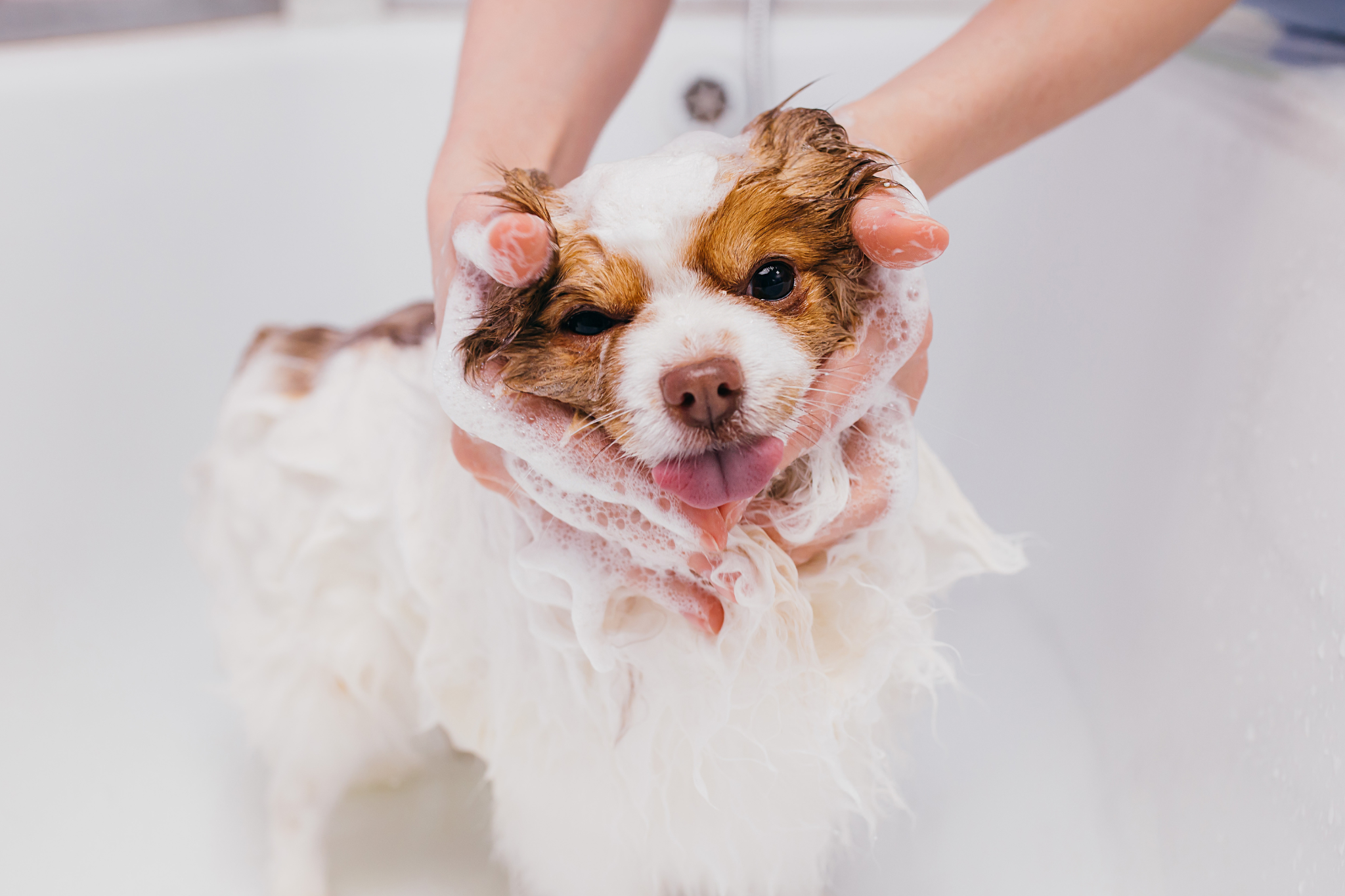
Living harmoniously with a hypoallergenic dog requires a multifaceted strategy to manage allergens in the home. Successful allergy management hinges on understanding that while hypoallergenic dogs are bred to produce fewer allergens, they still release some level of dander, saliva, and urine, which contain the proteins that trigger allergic reactions. Implementing a series of meticulous and consistent practices can drastically reduce the potential for allergens to build up in your living environment, leading to a more comfortable coexistence with your four-legged friend.
Regular Grooming
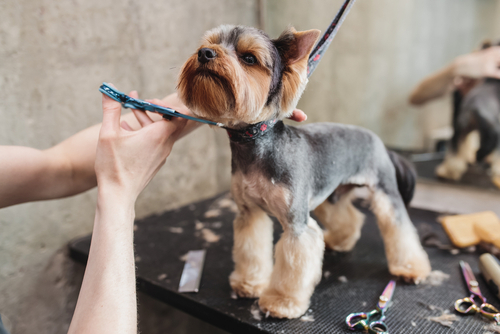
The foundation of allergen management begins with regular grooming of your hypoallergenic dog. Grooming is a powerful tool in the battle against allergens as it helps remove loose fur, dander, and saliva from your dog’s coat before they can be spread around the home. Breeds with long hair, such as the Afghan Hound or the Komondor, require daily brushing to prevent their hair from trapping and holding allergens. On the other hand, breeds with short or non-shedding coats, like Poodles or Bichon Frises, should still be brushed regularly, but may not necessitate daily grooming.
For dogs that do shed, utilizing a de-shedding tool during grooming sessions can be particularly effective at capturing loose fur and dander. Bathing your dog regularly with hypoallergenic shampoo can also be beneficial, but be careful not to overdo it, as excessive bathing can dry out your dog’s skin, potentially leading to more dander production. Consulting with a veterinarian can help you establish a grooming routine that is beneficial and safe for your dog’s specific breed and coat type.
Household Cleaning Routines

In conjunction with grooming, maintaining a stringent cleaning routine is imperative for reducing allergen levels in the home. Frequent vacuuming of carpets, rugs, and furniture with a vacuum cleaner equipped with a HEPA (High-Efficiency Particulate Air) filter can significantly lessen the amount of pet dander and hair in your living space. HEPA filters are designed to trap particles as small as 0.3 microns, which covers the size range of most allergens.
Moreover, regular dusting with a damp cloth can help collect allergens that settle on surfaces. Avoid using dry dusters or cloths, which may merely displace allergens into the air rather than removing them. For flooring, consider using a steam mop, which uses heat to kill dust mites and remove allergens without the use of chemicals that may irritate sensitive individuals.
Washable items such as dog beds, blankets, and throw rugs should be laundered frequently in hot water to kill dust mites and remove accumulated dander. Opt for hypoallergenic detergents that are fragrance-free and made for sensitive skin to prevent any additional irritation to both the pet and owner.
Utilization of HEPA Filters and Air Purifiers
Beyond vacuum cleaners, investing in an air purifier with a HEPA filter can have a significant impact on indoor air quality. Such devices are designed to continuously cycle air through a filter, capturing airborne allergens and particles. Placing air purifiers in high-traffic areas, as well as in the bedroom where you spend many hours each night, can greatly reduce allergen exposure.
Additionally, ensure that your home’s heating, ventilation, and air conditioning (HVAC) system is fitted with HEPA filters and that they are changed according to the manufacturer’s recommendations. It is essential to regularly service your HVAC system to ensure it is functioning optimally in reducing allergens.
Lifestyle Adjustments
Certain lifestyle adjustments can also be made to create an allergen-reduced environment. Opt for easy-to-clean furniture and minimize the use of heavy drapes and upholstered items that can harbor allergens. Leather or faux leather furniture, as well as wooden, tile, or vinyl flooring, are more allergy-friendly as they do not trap dander as fabric and carpet can.
Implementing a “pet-free zone” policy, particularly in the bedroom, can provide an allergen-reduced space for you to retreat to. This simple boundary can be particularly beneficial at night, when prolonged exposure to allergens can disturb sleep patterns.
Washing hands after petting your dog or cleaning up can help to reduce the spread of allergens to your eyes or nose, thus minimizing allergic reactions. If possible, enlisting non-allergic family members to take on the primary grooming and cleaning duties associated with pet care can also help alleviate the allergy sufferer’s symptoms.
Considerations When Bringing a Hypoallergenic Dog into Your Home
Before bringing a hypoallergenic dog into your home, it’s important to gauge how your allergies react to the particular breed. Spending time with the breed you are considering is a crucial step. While dog allergen levels are relatively individual and can vary from dog to dog, certain breeds are generally better suited to allergy sufferers. It’s also worthwhile to arrange an allergy test, which can provide valuable insights into which specific proteins trigger your allergies. This information can guide you in selecting a dog that is less likely to provoke your symptoms.
When you decide to adopt a hypoallergenic dog, approaching allergy management as an ongoing commitment rather than a one-time solution is key to a comfortable living situation. The strategies discussed, from regular grooming and thorough cleaning to smart home furnishings and air quality management, can significantly reduce allergen exposure, helping to maintain a happy, healthy relationship between you and your hypoallergenic pet.
The health and wellbeing of hypoallergenic dogs are as crucial as managing allergies for human companions. As a potential owner, recognizing the breed-specific health issues and the care required to address these concerns is essential.
Health Considerations for Hypoallergenic Dogs

When considering bringing a hypoallergenic dog into your home, it’s critical to be aware of their unique health considerations. Despite their suitability for allergy sufferers, these dogs may have breed-specific health issues, including skin conditions and genetic predispositions, which prospective owners should prepare for.
Skin Conditions
Hypoallergenic dogs often have unique coat types that may predispose them to certain skin conditions. For instance, dogs with non-shedding coats like Poodles and Bichon Frises are praised for their minimal dander; however, their dense hair can lead to skin issues. Without regular grooming, their fur can mat and trap moisture against the skin, creating an environment ripe for infections or hot spots—areas of inflamed, infected skin.
Another common skin problem in these breeds is atopic dermatitis, an inflammatory chronic skin disease associated with allergies. Breeds such as the West Highland White Terrier and the Chinese Crested are known to suffer from this condition. Symptoms may include intense itching, redness, and skin erosion which can be managed but not cured. Treatment typically involves managing the underlying allergies, often through a combination of medications, topical treatments, and changes in diet.
Genetic Predispositions
Certain hypoallergenic dog breeds carry genetic predispositions to health problems not directly related to their coat. For example, the Portuguese Water Dog, a breed with a waterproof coat that’s often recommended for allergy sufferers, has a predisposition to hip dysplasia and certain heart diseases. Regular health screenings and appropriate exercise can help mitigate these risks.
Additionally, smaller hypoallergenic breeds such as the Yorkshire Terrier can be prone to dental issues due to their small jaw size, leading to crowded teeth that are more susceptible to plaque buildup and periodontal disease. Owners should ensure regular dental check-ups and maintain good oral hygiene for their pets.
The Schnauzer, known for its distinctive wiry coat, is predisposed to pancreatitis and hyperlipidemia (high fat levels in the blood), conditions that require a carefully managed diet and regular veterinary check-ups to monitor signs of illness.
Breed-specific Care Requirements
Potential owners of hypoallergenic dogs must understand these breeds’ care requirements to maintain their health. For example, breeds with curly or long hair will require regular professional grooming to prevent mats and tangles that can lead to skin irritation. The owner should also be prepared to invest time in daily brushing to keep the coat clean and healthy.
Moreover, some hypoallergenic dogs may require a specialized diet to address or prevent health issues. For instance, the Labradoodle—a popular hypoallergenic breed that combines the features of the Labrador Retriever and the Poodle—may inherit a tendency for food allergies or sensitivities. A veterinarian can help identify the right diet to minimize the risk of allergic reactions.
Preparing for Health Care Needs
Being proactive in a hypoallergenic dog’s health care is crucial. This starts with choosing a reputable breeder who performs genetic testing and health screenings on their breeding dogs to minimize the transmission of heritable conditions. Regular veterinary check-ups are essential for early detection of health issues.
Prospective owners should also familiarize themselves with the common signs of distress in their chosen breed so that they can seek veterinary care promptly if needed. Having pet insurance or a healthcare plan can alleviate the financial burden of unexpected health issues and provide peace of mind.
Breeder and Veterinarian Consultation
When deciding on a hypoallergenic dog, consult with breeders and veterinarians who can provide breed-specific health information. Reputable breeders will be transparent about their dogs’ health histories and the common issues in the breed. Veterinarians can offer valuable advice on preventive care measures, appropriate vaccinations, and parasite control tailored to the specific needs of hypoallergenic dogs.
In summary, understanding and preparing for the health care needs of hypoallergenic dogs is an integral part of responsible pet ownership. By being knowledgeable about potential skin conditions, genetic predispositions, and breed-specific care requirements, you can ensure that your hypoallergenic dog lives a long, healthy, and happy life. The next stage in your journey with a hypoallergenic dog is to dispel some of the myths that surround these special breeds, ensuring that your expectations align with the realities of owning one of these unique pets.
Debunking Myths About Hypoallergenic Dogs

The term “hypoallergenic” can lead to a number of misconceptions about dogs, their allergenic potential, and what owning one truly entails. As we further explore the hypoallergenic dog breeds, it’s essential to debunk some myths that are commonly believed by prospective dog owners.
Myth 1: Hypoallergenic Dogs Are Completely Allergen-Free
One of the most pervasive myths is that hypoallergenic dogs produce no allergens at all. This is simply not true. All dogs produce proteins that can trigger allergic reactions in sensitive individuals. These proteins are found not only in the dog’s dander (dead skin flakes) but also in their saliva, urine, and even sweat. Hypoallergenic breeds typically produce less dander or have a coat that traps dander and prevents it from becoming airborne as easily as it does from other breeds. However, the proteins that cause allergic reactions can still be present around the home in saliva and urine or on the dog’s fur.
Myth 2: Hair Length and Shedding Determine Whether a Dog is Hypoallergenic
Another common belief is that dogs with shorter hair or those that shed less are hypoallergenic. While it is true that dogs that shed less tend to spread less dander around the home, shedding is not the sole determinant of whether a dog is hypoallergenic. Some short-haired breeds can produce more allergenic proteins, making them a poor choice for allergy sufferers, while some long-haired or double-coated breeds may be surprisingly suitable for those with allergies because they retain dander within their coats.
Myth 3: Hypoallergenic Dogs Do Not Require Grooming
Contrary to the belief that hypoallergenic dogs are low maintenance when it comes to grooming, many hypoallergenic breeds require regular grooming to maintain their coat and minimize allergen spread. Regular brushing and professional grooming can help to remove dander, loose hair, and saliva from the coat, all of which contain allergens. Additionally, frequent baths can help to wash away accumulated allergens. Neglecting the grooming needs of these dogs can actually increase the level of allergens in the environment.
Myth 4: Any Allergy Sufferer Can Live Comfortably With a Hypoallergenic Dog
Not every person with dog allergies will have the same reaction to hypoallergenic breeds. Allergies can vary widely in severity, and what may be manageable for one person can cause severe reactions in another. Some individuals may find that hypoallergenic breeds still trigger their allergies, albeit to a lesser extent, while others might not react to them at all. It’s essential for allergy sufferers to spend time with a hypoallergenic breed before committing to ownership to ensure that their reactions are manageable.
Myth 5: If You Have Allergies, a Hypoallergenic Dog is the Only Option
While hypoallergenic dogs can be a good option for allergy sufferers, they are not the only choice. Allergy management can also include a variety of other measures such as air purifiers with HEPA filters, limiting the dog’s access to certain areas of the home, frequent cleaning, and, in some cases, allergy medications or immunotherapy. Some people with allergies may find that they can tolerate a non-hypoallergenic breed with the help of these additional measures.
Addressing these myths is critical for potential dog owners to have a balanced and realistic understanding of what to expect from a hypoallergenic dog. While they may offer a solution for allergy sufferers to enjoy the companionship of a furry friend, it is crucial to approach the decision with a clear view of what hypoallergenic truly means. With this understanding, potential owners can make informed decisions and create the necessary environment to live harmoniously with their hypoallergenic pet.
Testimonials and Experiences
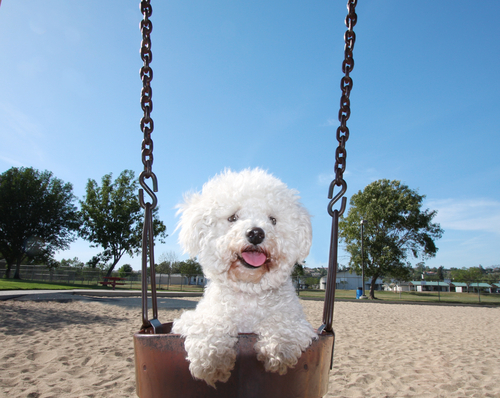
Gathering insights from individuals who live with hypoallergenic dogs provides an invaluable perspective on the day-to-day realities and the nuances that scientific explanations and guidelines can sometimes overlook. Through a series of testimonials, we can appreciate the diverse experiences and the practical implications of having a hypoallergenic dog as part of a family, especially for those dealing with allergies.
Carol and Her Bichon Frise
Carol, an allergy sufferer, spent years longing for a canine companion but was held back by her sensitivity to dog dander. That changed when she met a Bichon Frise named Benny at a friend’s house and noticed her symptoms were significantly less severe than expected. After researching and visiting multiple breeders, she welcomed her own Bichon Frise, Max, into her home.
“The first week with Max was a trial for me. Despite being a hypoallergenic breed, I still had to take antihistamines, but the reactions were much milder,” says Carol. “I created a routine where I brush Max every day. It’s bonding time for us, and it also helps keep the allergens at bay. Additionally, I’ve invested in a good vacuum cleaner and air purifiers for each room.”
Carol’s experience shows that while hypoallergenic dogs are not a cure-all for allergies, with careful management, the symptoms can be significantly reduced, enabling a fulfilling relationship between an allergy sufferer and their dog.
James’ Story with a Portuguese Water Dog

When James, who has moderate allergic reactions to dogs, became interested in owning one, he learned about the hypoallergenic nature of Portuguese Water Dogs. After spending time with a friend’s dog of the same breed and experiencing minimal allergic symptoms, he decided to adopt one named Sailor.
“Sailor’s coat is unique; it’s curly and dense, so it traps dander, and that seems to reduce the number of allergens in my environment,” James explains. “I make sure Sailor gets a bath every few weeks, and he’s groomed regularly to keep his coat in check. It’s definitely a commitment, but it’s worth it.”
James points out that despite the effort required to manage his allergies, the companionship of Sailor has had a positive impact on his life, underscoring that the right hypoallergenic dog breed, alongside consistent grooming and household cleanliness, can make dog ownership possible for those with allergies.
Susan and the Labradoodle Journey

Labradoodles, a cross between Labrador Retrievers and Poodles, are often praised for their hypoallergenic qualities. Susan, who always had a mild reaction to dogs, was attracted to their friendly nature and hypoallergenic reputation.
“My Labradoodle, Cocoa, has a woolly coat that hardly sheds. This has certainly been beneficial,” Susan notes. “But I’ve realized it’s not just about shedding. I need to make sure I’m not allowing Cocoa into my bedroom to limit my exposure to allergens during sleep. I also wash her bedding often.”
Her approach highlights the multi-faceted strategies allergy sufferers may need to employ beyond relying solely on the hypoallergenic traits of their pets.
Wrap-Up: Living with Hypoallergenic Dogs
The anecdotes from Carol, James, and Susan show that while hypoallergenic dogs may not completely eliminate the potential for allergic reactions, with the correct breed selection, grooming habits, and household adjustments, individuals with allergies can indeed find joy and companionship in dog ownership. These stories emphasize the importance of understanding one’s own allergy levels, the unique needs of each hypoallergenic breed, and the ongoing commitment required to balance the benefits of pet ownership with allergy management.
Conclusion: Embracing Life with Your Hypoallergenic Dog
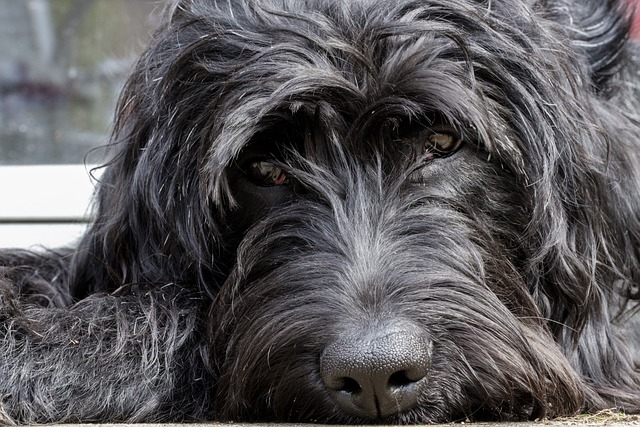
Living with hypoallergenic dogs offers a viable option for allergy sufferers to enjoy the benefits of pet ownership. These dogs possess traits that reduce allergens, such as non-shedding coats that limit dander dispersal. Breeds like Poodles, Bichon Frises, and various “doodle” mixes are known for these hypoallergenic properties.
Key Takeaway Points:
-
Understanding Allergens: Allergic reactions are typically triggered by proteins in a dog’s dander, saliva, and urine. Hypoallergenic dogs still produce these allergens but in potentially lower quantities.
-
Characteristics of Hypoallergenic Dogs: Features such as non-shedding coats help reduce the spread of allergens. Popular hypoallergenic breeds include Poodles and Schnauzers, each varying in size, temperament, and exercise needs to suit different lifestyles.
-
Choosing the Right Dog: It’s crucial to match a dog’s energy level, size, and grooming needs with your lifestyle and allergy needs. For instance, a dog with high activity needs or extensive grooming requirements might not be suitable for everyone.
-
Maintaining a Hypoallergenic Environment: Regular grooming, use of HEPA filters for cleaning, and establishing dog-free zones are effective strategies to minimize allergens at home.
-
Health and Care: Like any dog, hypoallergenic breeds require regular veterinary care, a balanced diet, and exercise. Awareness of breed-specific health issues is also important.
-
Setting Realistic Expectations: No dog is completely allergen-free; hypoallergenic dogs can still trigger allergies, though typically to a lesser extent.
Living with a hypoallergenic dog involves understanding and managing their specific needs and allergen potential. By choosing the right breed and maintaining a clean environment, allergy sufferers can greatly benefit from the companionship of these special dogs, enjoying reduced symptoms and a better quality of life.



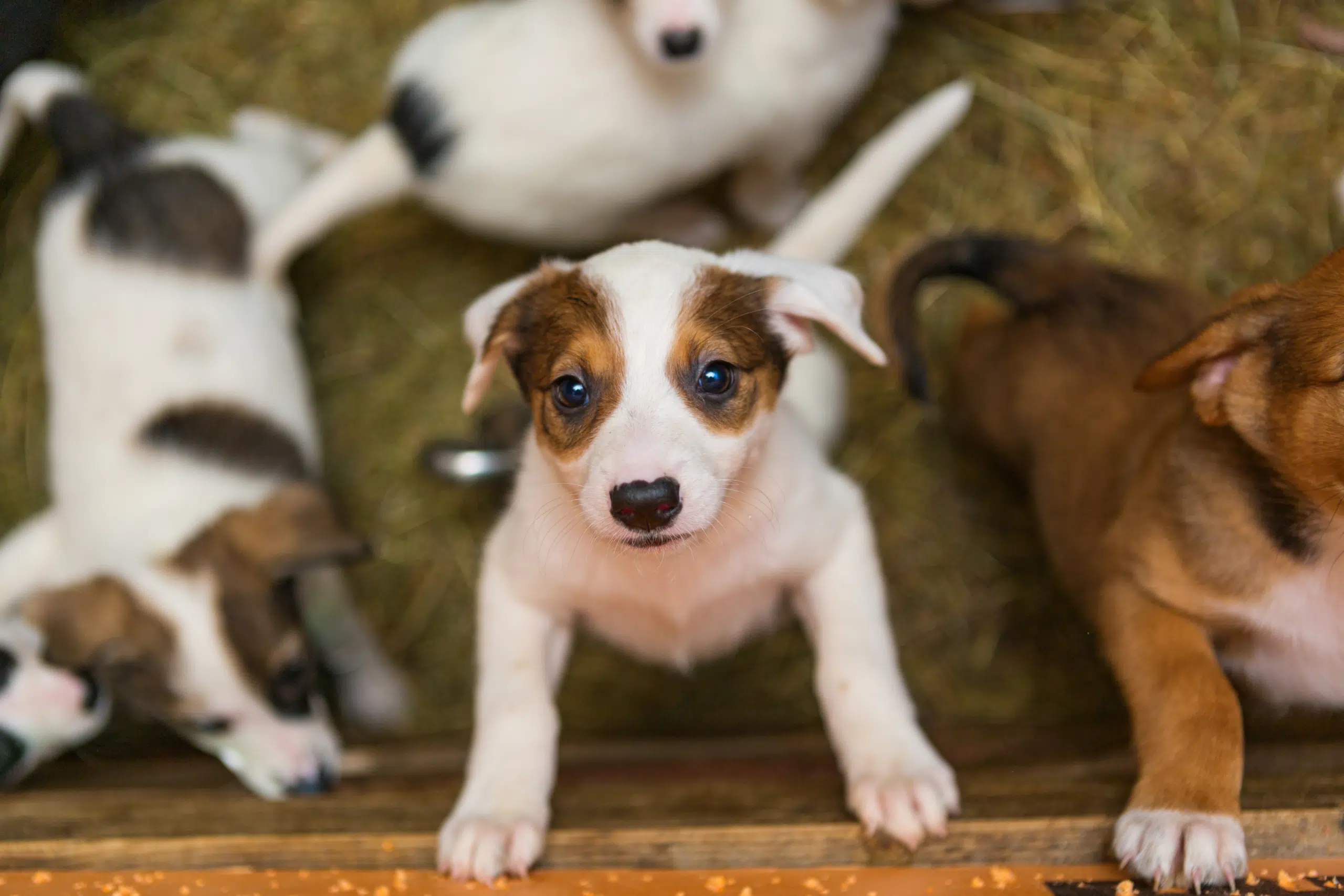

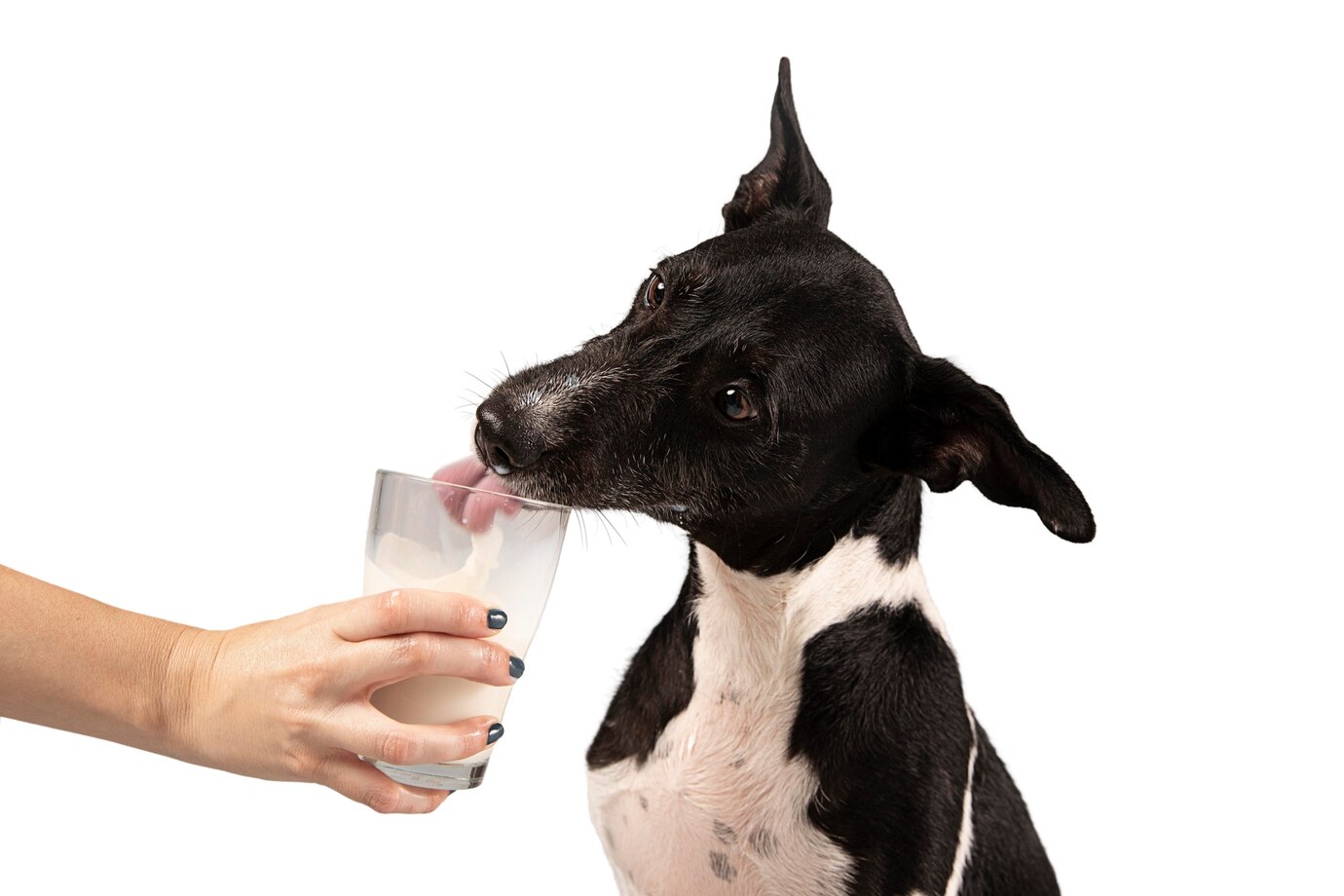

Get involved!
Comments